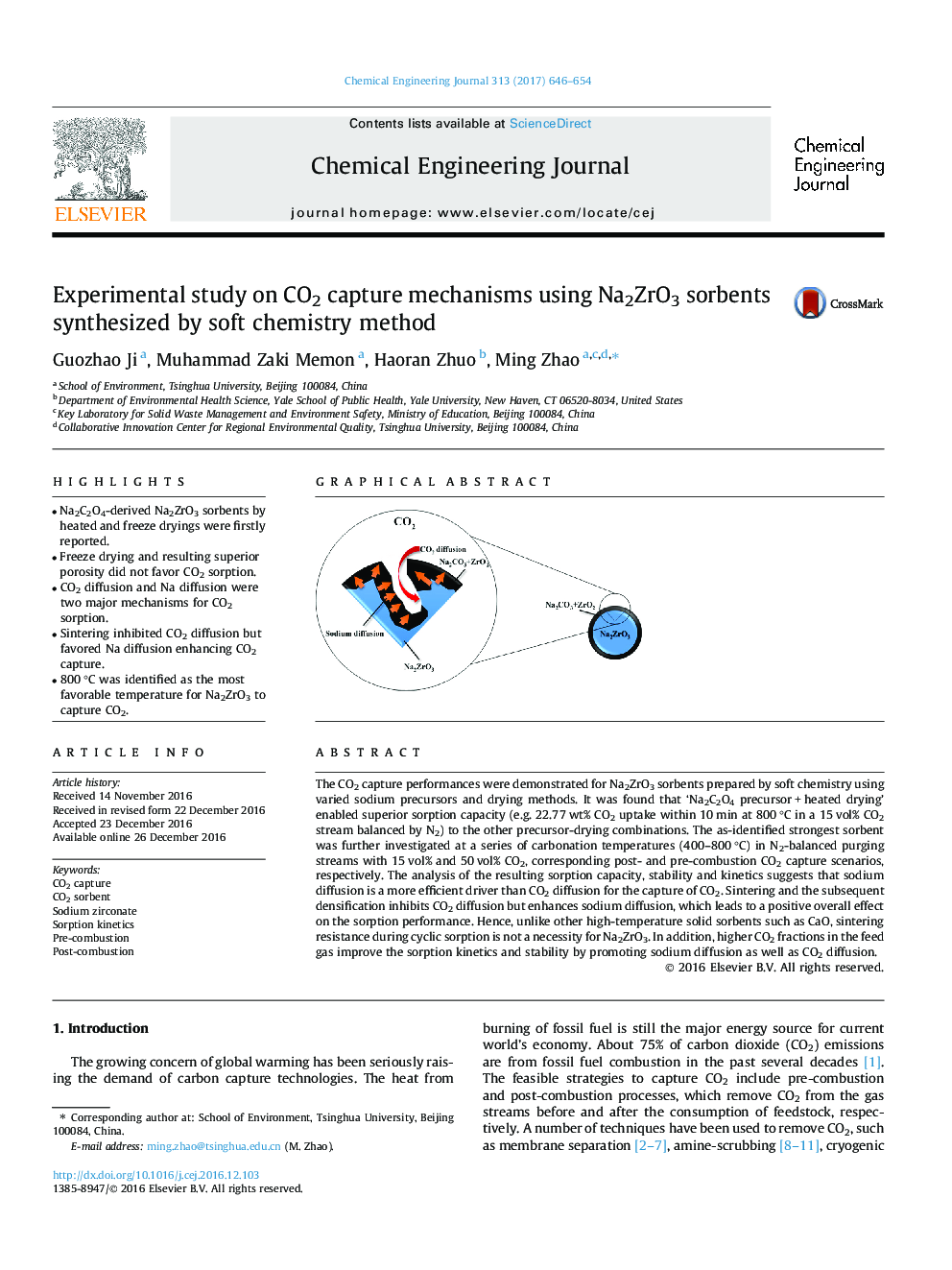| Article ID | Journal | Published Year | Pages | File Type |
|---|---|---|---|---|
| 6466594 | Chemical Engineering Journal | 2017 | 9 Pages |
â¢Na2C2O4-derived Na2ZrO3 sorbents by heated and freeze dryings were firstly reported.â¢Freeze drying and resulting superior porosity did not favor CO2 sorption.â¢CO2 diffusion and Na diffusion were two major mechanisms for CO2 sorption.â¢Sintering inhibited CO2 diffusion but favored Na diffusion enhancing CO2 capture.â¢800 °C was identified as the most favorable temperature for Na2ZrO3 to capture CO2.
The CO2 capture performances were demonstrated for Na2ZrO3 sorbents prepared by soft chemistry using varied sodium precursors and drying methods. It was found that 'Na2C2O4 precursor + heated drying' enabled superior sorption capacity (e.g. 22.77 wt% CO2 uptake within 10 min at 800 °C in a 15 vol% CO2 stream balanced by N2) to the other precursor-drying combinations. The as-identified strongest sorbent was further investigated at a series of carbonation temperatures (400-800 °C) in N2-balanced purging streams with 15 vol% and 50 vol% CO2, corresponding post- and pre-combustion CO2 capture scenarios, respectively. The analysis of the resulting sorption capacity, stability and kinetics suggests that sodium diffusion is a more efficient driver than CO2 diffusion for the capture of CO2. Sintering and the subsequent densification inhibits CO2 diffusion but enhances sodium diffusion, which leads to a positive overall effect on the sorption performance. Hence, unlike other high-temperature solid sorbents such as CaO, sintering resistance during cyclic sorption is not a necessity for Na2ZrO3. In addition, higher CO2 fractions in the feed gas improve the sorption kinetics and stability by promoting sodium diffusion as well as CO2 diffusion.
Graphical abstractDownload high-res image (59KB)Download full-size image
